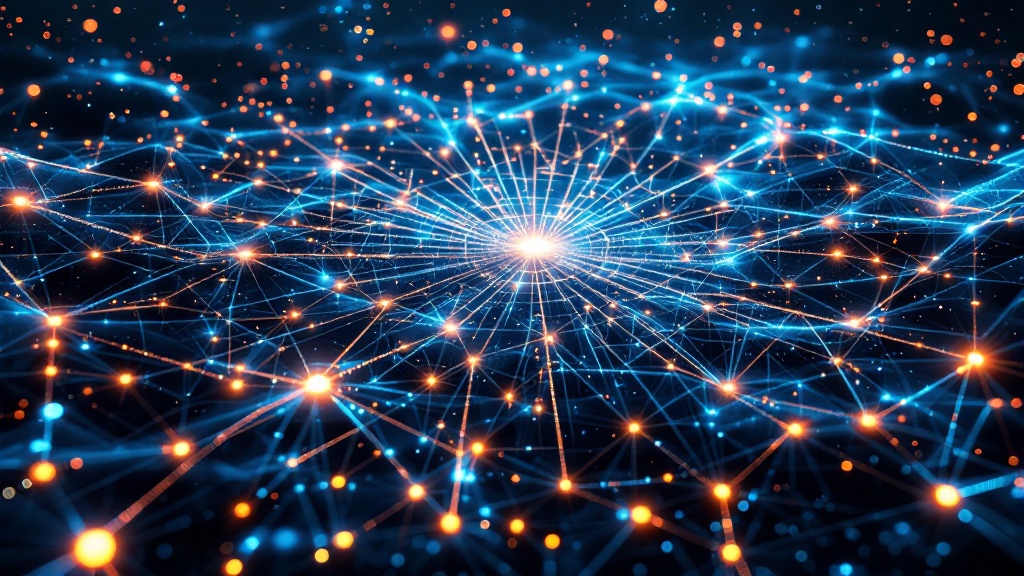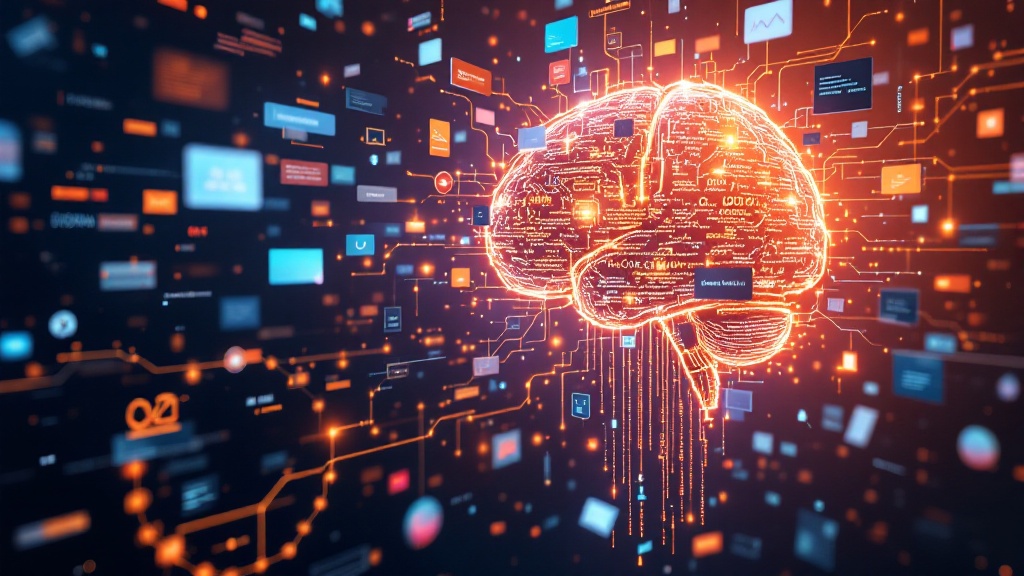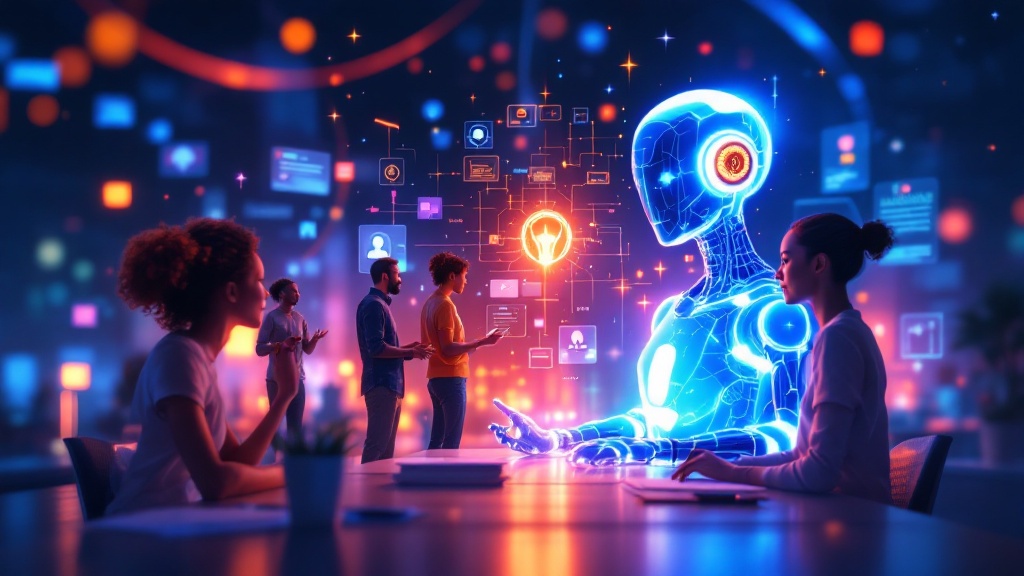Introduction
Imagine a world where machines can converse, comprehend, and create with the same finesse as a human being. This is not a distant future, but a reality brought to life by GPT, or Generative Pre-trained Transformer. In an age where artificial intelligence continually reshapes our understanding of language and communication, GPT stands out as a groundbreaking innovation that harnesses vast amounts of text data to generate coherent and contextually relevant responses. But what exactly is GPT, and how does it empower both individuals and industries alike? Join us as we delve into the digital landscape of AI, exploring the intricacies of this remarkable technology that is transforming the way we interact with machines and each other.

What Does GPT Stand For?
GPT, an acronym for Generative Pre-trained Transformer, represents a significant advancement in artificial intelligence technology. The term “Generative” signifies its capability to produce coherent and contextually relevant text based on the input it receives. Extensive training on a diverse dataset is what the “Pre-trained” aspect refers to, enabling the model to acquire a wide-ranging understanding of language before it is fine-tuned for specific applications.
Additionally, the “Transformer” architecture is integral to GPT, as it allows for the efficient processing and generation of text that closely resembles human writing. This combination of features makes GPT a powerful tool in the realm of AI.
Want to understand the backbone of these tools? Our blog How Does Large Language Models Work breaks down the foundational mechanics behind GPT and similar AI technologies.

What Makes GPT important?
The importance of GPT lies in its profound impact on natural language understanding, which significantly enhances the way humans interact with computers. Such intuitive exchanges foster a more seamless user experience, bridging the gap between technology and users. Moreover, by democratizing access to advanced AI technology, GPT makes powerful tools available to a broader audience, empowering individuals and organizations alike.
Content creation and ideation also benefit immensely, as writers and creators leverage GPT’s capabilities to generate high-quality material efficiently. Finally, its ability to learn from vast datasets ensures that GPT can deliver relevant and context-aware responses in real-time, making it an indispensable asset in today’s fast-paced digital landscape.
As these systems evolve, they’re also becoming more emotionally intelligent and context-aware. Learn more in AI is Becoming More Context-Aware and Emotionally Intelligent.

The Different Applications of GPT
The versatility of GPT opens up a multitude of applications across various fields, showcasing its transformative potential in both professional and personal realms.
- Content Generation: By streamlining the writing process, GPT enables authors to produce articles, blog posts, and marketing copy with remarkable efficiency. This capability allows writers to focus more on creativity and less on the tedious aspects of drafting.
- Customer Service: Leveraging GPT in chatbots revolutionizes customer interactions by providing instant, accurate responses to user inquiries. This immediate feedback not only enhances user experience but also reduces the workload on human agents.
- Language Translation: With its advanced understanding of context, GPT significantly improves the accuracy of translations between different languages. This feature makes cross-cultural communication more effective and bridges language barriers.
- Education: In educational settings, GPT serves as an invaluable tutor, offering personalized explanations and support on a wide range of subjects. By catering to individual learning needs, it fosters an engaging and tailored educational experience.
These applications illustrate how GPT is reshaping industries by enhancing efficiency and improving user interactions, ultimately making it a cornerstone of modern AI technology. In fact, businesses are already leveraging GPT-based chat tools to improve customer support. Discover how in AI-Powered Chatbots Are Revolutionizing Customer Support.

How GPT is Transforming Natural Language Processing
GPT significantly enhances natural language understanding by empowering machines to generate text that closely mirrors human writing, thereby improving communication between humans and AI. Its transformer architecture plays a vital role in this process, as it retains context more effectively and ensures coherence in the responses generated. By training on a diverse array of datasets, GPT acquires a broad spectrum of knowledge, making it exceptionally versatile for various applications within the realm of natural language processing (NLP).
This capability is vividly demonstrated through its ability to perform tasks such as translation, summarization, and question-answering, showcasing the transformative impact GPT has on the field. Not only does it streamline communication, but it also elevates the overall interaction experience between users and technology, marking a significant leap forward in AI capabilities. These NLP capabilities are also key to optimizing digital marketing. Explore how in How AI Can Improve Your Email Marketing Strategy.

The Future of AI: What Lies Ahead for GPT Models
The future of GPT models is poised for remarkable evolution, promising more context-aware and nuanced conversational abilities that will significantly enhance user interactions. As advancements in ethical AI development progress, a key focus will be on reducing bias and improving transparency within GPT outputs, fostering greater trust in these systems. Industries are set to be revolutionized through the integration of GPT, transforming customer service, content creation, and data analysis.
Furthermore, future iterations are likely to incorporate real-time learning capabilities, enabling GPT to adapt dynamically to user preferences and emerging trends while delivering increasingly relevant and personalized experiences.Such innovations are already influencing how industries customize AI solutions to their needs. See examples in The Rise of Personalized AI: How Custom GPTs Are Shaping Industries.

Conclusion
In conclusion, GPT represents a groundbreaking leap in artificial intelligence, transforming the way we interact with technology and enhancing natural language processing capabilities. Its unique combination of generative, pre-trained, and transformer features positions it as a versatile tool across various applications, from content generation to customer service and education.
As we look to the future, the evolution of GPT models promises even more sophisticated and context-aware interactions, paving the way for a more seamless integration of AI into our daily lives. The ongoing focus on ethical development and bias reduction will further strengthen the reliability and trustworthiness of these systems. Ultimately, GPT not only enriches our communication with machines but also empowers users and industries to unlock new levels of creativity and efficiency, making it an indispensable asset in the rapidly evolving digital landscape.
Still wondering if AI can truly match human originality? Our blog Can AI Tools Replace Human Creativity? The Truth in 2025 explores the boundaries between machine intelligence and creative expression.

Leave a Reply